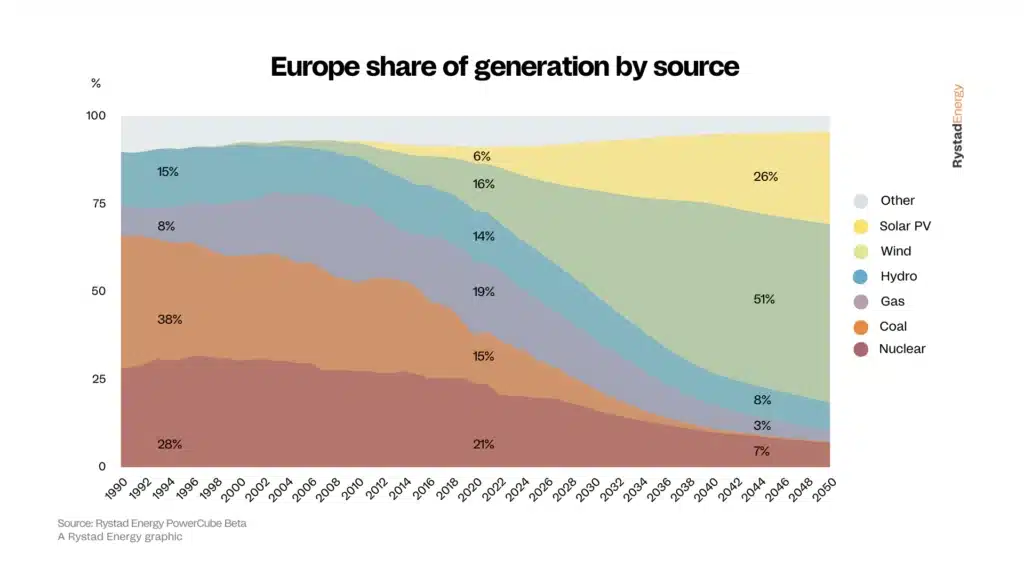A new study from the energy research company Rystad Energy notes that in Europe, in the long run, running natural gas power plants is 10 times more expensive than building new solar photovoltaic capacity.
News that many suspected, but which is more evident now that natural gas has (re) skyrocketed as a result of the collapse of Russian exports.
A systematic review
Rystad Energy reports that “spot prices on the Netherlands-based Title Transfer Facility (TTF) gas hub (the main benchmark for Western Europe), increased from an average of 46 euros per megawatt hour (MWh) in 2021 at 134 euros per MWh so far this year. An increase of 187%“. And natural gas will be needed for power generation during the winter.
On the other side, that of solar energy, more than 50 gigawatts (GW) of new solar and wind capacity should be put into service in 2023, to which must be added a maximum of 30 GW of nuclear capacity currently undergoing maintenance. the French multinational EDF plans to put it back "in circulation".
For this reason, Rystad expects that the prices of the TTF will stabilize by 2030 at around € 31 per MWh, which brings the levelized cost of electricity (LCOE) of existing plants at €150 per MWh. This is three times higher than the LCOE of the new photovoltaic solar systems.

Photovoltaics much cheaper than natural gas: a reversible trend?
No. At least according to experts' estimates. To remain competitive, natural gas prices would have to approach €17 per MWh, which, according to Rystad, is “unthinkable”.
Natural gas will play an important role in the European energy mix for a while yet. But unless something fundamental changes, both climate concerns and economic factors will tip the balance totally in favor of renewable.
Carlos Torres Diaz, Head of Energy at Rystad Energy
The figures of a change
The study also found that by 2028, new clean power generation capacity installed using money that would otherwise have been spent on gas production would reach 333 GW, enough to generate 663 TWh of electricity. The production of this energy from renewable sources would therefore be sufficient to replace the natural gas production planned for that same year.
By 2050, the new renewable energy capacity will generate more than 2.000 TWh. And we're just talking about the capacity developed using funds currently earmarked for natural gas.
In summary: it seems that in Europe we will say goodbye to natural gas. Renewable sources become cheaper and more efficient every day, while natural gas prices skyrocket, making it an increasingly less competitive source of energy. Add to this economic, geopolitical and climatic pressures, it is clear that renewable sources will be our best bet for a sustainable future.


